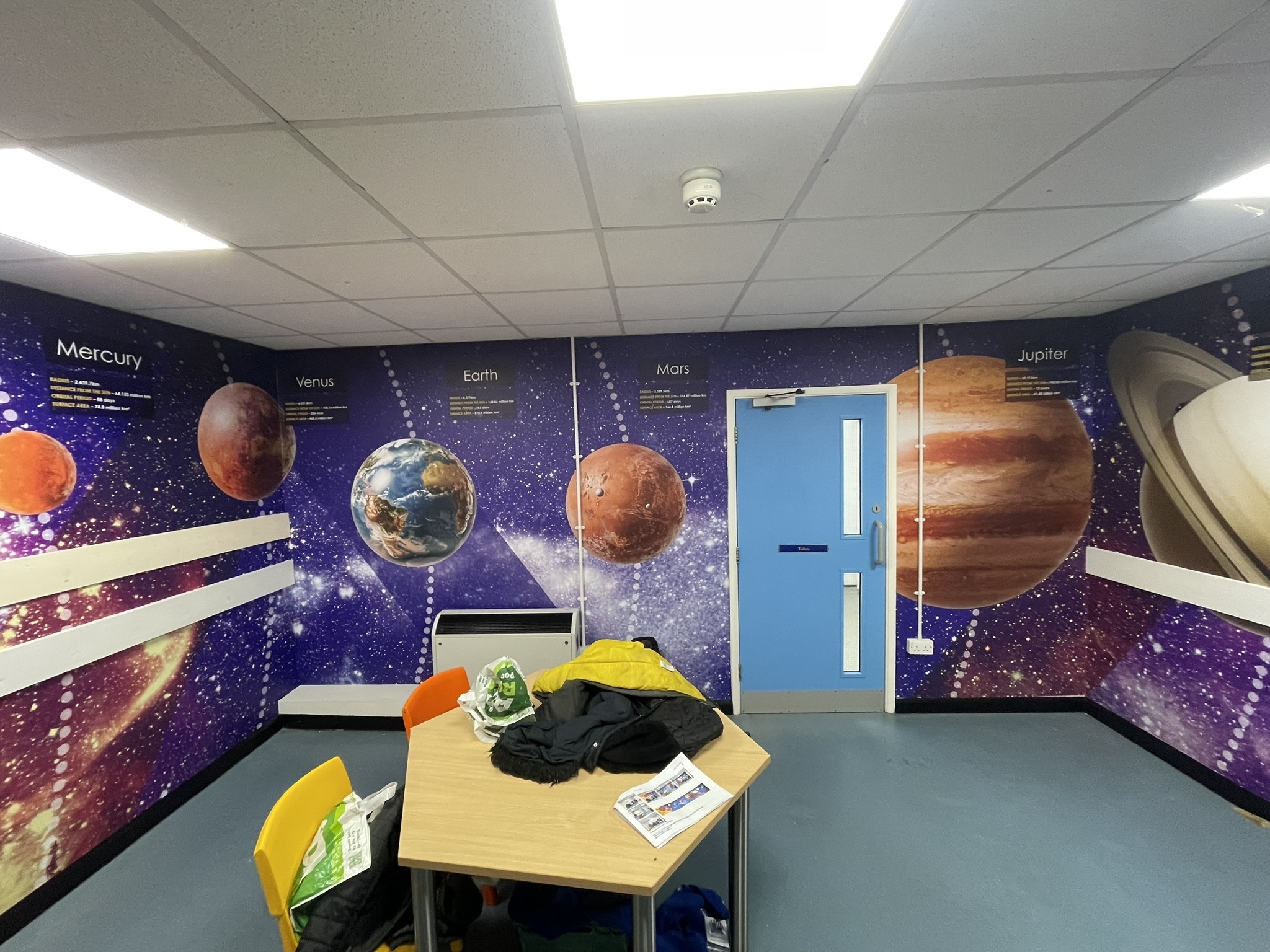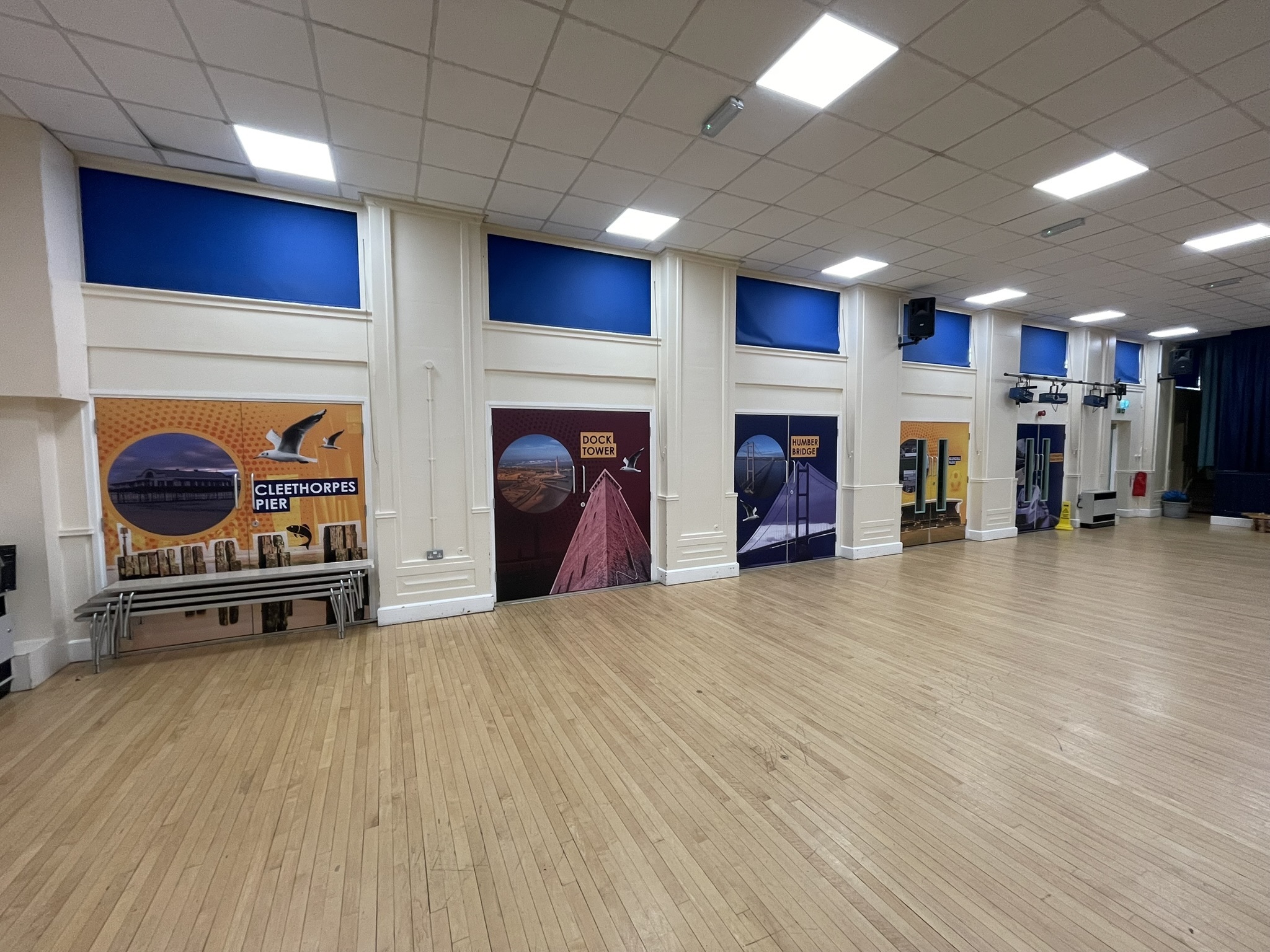


It’s easy to see educational graphics – things like posters, wall displays or floor stickers – as just a way to merely brighten up a school space. They make things look nice, add a splash of colour, and help to make school premises feel more welcoming. But that’s only part of the story.
Done well, visual materials can play a big role in how pupils take in and remember information. From early years classrooms to sixth form corridors, graphics can help reinforce students’ learning, boost their confidence, and create an environment that supports both students and staff.
Educational graphics cover a lot of ground. They can be made up to be anything - from alphabet walls and number lines to science diagrams, world maps, or historical timelines. Some can be interactive, like floor graphics you can hop along or touch. Others might be more about setting the tone – like inspirational quotes or subject-themed displays.
Whatever the content, educational wall graphics should be designed to do more than just look good – they help pupils engage with what they’re learning, often in a more visual and memorable way.
Not every child learns in the same way. Some pick things up by listening, others by doing, and many by seeing. Visual learning gives pupils another route into understanding a topic and helps with their memory and recall too.
Let’s say you’ve just introduced a new concept to students. Having that same information shown visually on the wall or floor gives pupils a reference point they can keep coming back to. It supports independent learning and takes some of the pressure off the teacher repeating things over and over.
For younger children, or those with special educational needs, this can be especially helpful. Visuals offer structure and cues in a way that feels calm and constant – they’re always there, even when a classroom is busy or noisy.
Graphics can also reduce cognitive overload. Instead of dumping lots of written text in one go, visual layouts help break things into smaller parts, making information more digestible. And yes – they also make the classroom more enjoyable to be in, which counts for a lot.
Graphics aren’t limited to where the lessons happen. Across the whole school building, there are opportunities to support learning in visual ways.
Hallways can carry themed content – maybe key vocabulary for a topic, or a visual journey through British history. Floor graphics can double up as learning games, like number hunts or literacy trails. Staircases might show times tables or key facts.
In sensory spaces or SEND areas, wall graphics can provide calming visuals or structure to help pupils feel safe. Wayfinding signage, when designed with care, can help everyone – especially younger pupils or visitors – get around school independently.
Good educational graphics aren’t just about colour or creativity. It’s about clear communication. Fonts, layout, contrast, and positioning all make a difference in how easy something is to read and understand – especially from a distance or at a child’s eye level.
Design choices need to be age-appropriate, accessible, and suited to how each space is used. What works in a Year 1 classroom won’t necessarily be right for a secondary science lab or shared corridor. The best graphics support learning without shouting over each other for attention.
Schools know what their pupils need. The key is taking those ideas and turning them into practical, thoughtful visuals that do the job well – and look good while they’re at it.
Whether it’s classroom walls, corridor trails or calming sensory spaces, vinyl graphics that are designed with care can make a real difference to how pupils connect with what they’re learning.
If you’re looking to bring your ideas to life, The Ark Design and Print can help with the design, print and installation of high-quality wall and floor vinyl graphics that suit your space and your school. No egos. No fuss. Just practical support from start to finish – and educational wall graphics that do their job well.


